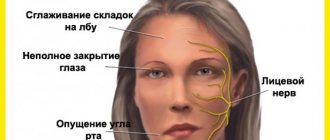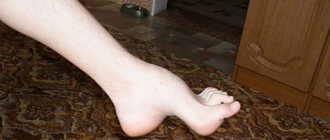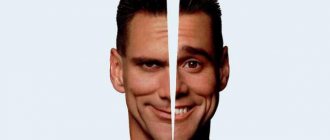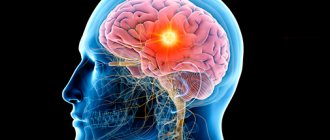Acalculia is a neuropsychiatric syndrome characterized by loss of the ability to perform arithmetic operations and perceive numbers. Develops when the dominant hemisphere is damaged: in right-handed people, the left hemisphere, in left-handed people, the right hemisphere.
Acalculia is an acquired disease and occurs against the background of damage to areas of the brain or neuropsychiatric diseases. It occurs against the background of disturbances in the temporal, parietal and occipital regions of the cerebral cortex, which in turn arises due to injuries, neuroinfections, neoplasms, etc.
Acalculia also often develops against the background of an underlying neurological or mental illness. Thus, acalculia is often combined with the following diseases: optical agnosia, alexia, dyslexia, acoustic-mnestic aphasia, attention deficit, sensory aphasia, amnesia, dementia, stroke.
Reasons for violation
Acalculia occurs due to damage to the parietal, occipital, temporal and prefrontal parts of the cerebral cortex. The causes of such brain damage can be different:
- a significant number of neurological disorders in the perinatal period
- hereditary factor;
- organic brain lesions;
- neuroinfections;
- neoplasms in the brain;
- various intoxications;
- dysmetabolic abnormalities;
- brain damage due to infectious diseases;
- negative social environment;
- cerebrovascular diseases;
- traumatic brain injuries.
Types and forms of the disease
The development of acalculia occurs with disorders of various cognitive systems. Depending on which cognitive function is affected, the following types of disease are distinguished:
- Verbal – deviations in the verbal designation of mathematical concepts. The patient can successfully perform mathematical operations, but cannot verbally indicate the names of numbers, symbols, and is unable to indicate the number of objects.
- Apraxic – a person is unable to count objects. The patient cannot count objects and identify their quantitative characteristics.
- Dyslexic – lack of ability to read mathematical symbols and express quantitative terms.
- Graphic – the inability to write down mathematical symbols and signs, as well as to correctly depict geometric figures.
- Operational – loss of ability to perform mathematical operations.
Also, cases of acalculia can be divided on the basis of primary and secondary.
Primary (specific) – caused by lesions of areas of the cerebral cortex, the following types are distinguished:
- Frontal - caused by dysfunction of the frontal lobe of the brain, which is responsible for the control and regulation of all human mental functions. The ability to count is impaired due to deviations in the organization of conscious activity.
- Parietal (parieto-occipital) - occurs when the parieto-occipital areas of the brain are damaged. The patient’s concept of “number”, understanding of the essence of counting operations, and perception of spatial coordinates are impaired.
Secondary (nonspecific) – occurs due to a neuropsychiatric disease, the following types are distinguished:
- Optical - occurs with pathologies of the lobes of the brain responsible for the visual analyzer. With optical acalculia, the visual perception of numbers and mathematical symbols is impaired. The patient is unable to distinguish between similar arithmetic symbols and recognize Roman numerals.
- Sensory – develops with damage to areas of the brain involved in the acoustic perception of speech. Manifests itself in difficulties with oral counting and carrying out counting operations by ear.
- Acoustic-mnemonic – also associated with the acoustic perception of speech. The difference is that the patient has impaired auditory-verbal memory and a reduced volume of auditory perception.
Difference from dyscalculia
Acalculia and dyscalculia are similar concepts, but there are differences between them. It lies in the fact that dyscalculia is a consequence of congenital disorders of brain development and with it mathematical knowledge is not fully absorbed. Acalculia is an acquired condition, and occurs due to neurological injuries and disorders acquired during life.
Let us give an example of optical (occipital) acalculia. Patient R., ist. b. No. 34285, the tentorium tumor was removed, the cyst fit under the cortex of the inferior parietal lobe. A neuropsychological study showed the presence of temporo-parieto-occipital syndrome: acoustic-mnestic aphasia, elements of semantic aphasia, literal optical agraphia and alexia, parieto-occipital acalculia. Defects in the optical perception of signs (letters, numbers) manifested themselves in substitutions of optically similar characters, in defects in the perception of their spatial orientation, as well as in an increase in the time of recognition of signs. Thus, the patient recognized (read) the number 896 in 9 seconds (“eighty six... no, not that! eighty nine... eight hundred sixty six... no, maybe eight hundred ninety six, or what? But I’m not sure”). The number 750 was read as 739, the number 5350 as 585, etc. She read the number XI as 51 (then as 9), the number XII as 15, etc.
Computational operations: knowledge of the multiplication table has fallen apart. The automated process of reproducing the multiplication table was replaced by an arbitrary act. So, she performs the multiplication operation 3x7 as follows: “Three multiplied by seven equals twenty-eight... No, what am I... three times seven equals... it seems... eighteen... Oh, I forgot everything?!” Subtraction was impaired due to defects in spatial representations and the bit structure of numbers. She performs the task from 45 to subtract 18 as follows: “So, forty-five subtract ten... first it will be thirty-five, and now subtract seven.” - “Why seven? Where did you get this number from? - “After all, we have already taken away one.” - “But it was one dozen.” - “What should I do next? (Pause.) Still, I think this: forty-five minus ten is thirty-five, thirty-five subtract seven... No, I don’t know.”
Remedial training in these cases is carried out in the direction of correcting defects in optical and optical-spatial perception. After two months of training, the patient was able to read and write simple and complex numbers and all numbers from dictation. I could analyze the bit composition of given numbers. However, these processes still proceeded slowly, arbitrarily, and often with errors. Accounting operations became accessible to the patient.
This case illustrates mild parieto-occipital acalculia with predominant defects in optical perception.
Nonspecific disorders of counting and counting operations can also be encountered with damage to the temporal cortex of the left hemisphere. In these cases, counting disorders occur together in the syndrome of acoustic agnosia, against the background of impaired phonemic hearing and auditory-verbal memory. With temporal acalculia, recognizing numbers by ear and naming them becomes inaccessible. That is why the most serious defects in counting and counting operations are found in their oral form. However, the structure of number and counting in this case remains intact. Replacing a defective acoustic analyzer with a intact visual one leads to good results in counting restoration.
10.2.2. Frontal acalculia and remedial training methods
A completely different form of counting disorder is found with damage to the frontal lobes of the brain, which play a significant role in the development and preservation of known action programs, allowing these programs to be changed as the situation changes and giving activity a mobile, selective character. Damage to the frontal lobes does not lead to damage to visual or auditory reception, does not cause the disintegration of spatial schemes and does not affect the performance of complex logical-grammatical operations. The central mechanism of counting violation in these cases is a gross violation of the development of action programs and the subordination of behavior to them; intellectual activity loses selectivity and purposefulness. Naturally, a violation of the main components of activity one way or another is reflected in the flow of accounts and accounting operations. In patients with frontal syndrome, the counting process and the concept of number are disrupted for the second time. The neuropsychological picture of the disorder shows intact recognition and naming of numbers, the process of automated counting (multiplication tables, addition and subtraction within one ten, etc.). Number and counting operations are violated in them as a purposeful selective activity. In the clinical picture of the disorder, these defects manifest themselves in instability of the task, in defects in active search activity (i.e., the creation of an action program is disrupted), in impulsively emerging side connections of numbers, in simplification of the action program (sometimes in inert stereotypes) and, finally, in violation comparison of the effect with the original data. These defects in intellectual activity are revealed primarily in solving arithmetic examples, consisting of several links and requiring a sequence of operations, retention of intermediate results, and comparison of the obtained results with the initial data.
Counting disorders that occur when the posterior frontal systems of the brain are damaged are somewhat different in the mechanisms of occurrence and clinical manifestation from acalculia, which occurs in other variants of the “frontal syndrome”. Counting defects here usually occur in a syndrome of pronounced speech and motor perseverations. These defects, often occurring together with efferent motor aphasia, also do not primarily affect the structure of the counting process, however, perseverations complicate the performance of this function. Accounting operations acquire an expanded, de-automated character. Severe speech impairments with massive lesions of the posterior frontal regions further complicate the counting function.
Let's give a corresponding example. Patient Sh., 47 years old, history. b. No. 43119, with secondary technical education. After removal of an intracerebral tumor of the left frontal lobe.
Extract from the protocol:
The patient is given the task of making the number 18 from other numbers in their different combinations. Patient: “9 and 9... 9 and 9 in half... 9 cannot be divided into two... 9 doesn’t work here either.” - “What other numbers can you use to make the number 18?” - “9 and 9, 9... and 12...”
10.2. Nonspecific forms of counting disorders (secondary acalculia). Recovery methods – previous | next – 10.2.2. Frontal acalculia and remedial training methods (continued)
Content. Neuropsychological rehabilitation of patients. Speech and intellectual activity.
Symptoms of the disorder
Symptoms of acalculia vary depending on the form of the disease.
In the primary form of the disorder, the patient experiences the following symptoms:
- difficulty understanding the difference between seemingly similar numbers (for example, 147 and 174);
- inability to perceive the category of numerical digits;
- difficulties performing simple arithmetic operations;
- violation of understanding of the concept of “number”;
- lack of ability to compare numerical values;
- the perception of spatial coordinates is impaired;
- difficulties in estimating numbers containing the digit “zero”;
- Difficulty with subtraction, but addition is relatively easy.
The secondary form of acalculia is manifested by the following symptoms:
- there is no visual perception of numbers, and ignorance of their names;
- the perception of numbers and mathematical operations by ear is impaired;
- problems with understanding mathematical operations, planning them and controlling their execution.
Symptoms and signs of the disease
Pathology can have one or another manifestation depending on what form it takes. People with the primary form are unable to understand number meanings and cannot perform even simple arithmetic operations.
Secondary acalculia always occurs together with other cognitive disorders. Patients are unable to name the number they see and confuse numbers with similar spellings. Such patients have difficulty remembering. They cannot, even through numerous lessons, learn the numbers from 0 to 10. At the same time, they understand the meaning of the number, are able to perceive them by ear, and can perform simple operations in their minds.
The sensory form of the pathology manifests itself in significant impairments in recognizing the names of numbers by ear. People are not able to understand the speech they hear, while they talk a lot themselves - they mix up words in places, speak unintelligibly, so it is very difficult, and sometimes completely impossible, to understand. In this case, patients can read numbers and understand their meaning.
Acoustic-mnestic is manifested in a violation of the volume of perception of numbers, problems with their memorization. Such people make many mistakes when writing numbers and experience difficulties both in counting and in understanding the number itself.
People with the frontal form of the disease cannot carry out arithmetic operations in the correct order, even if they are very simple and have been shown repeatedly. In this case, a person can count within 10, but cannot add, subtract, multiply, or divide.
Inspection and diagnostics
A defectologist, psychologist, psychiatrist, or specialist in neuropsychology can identify the disease.
Numeracy disorder is rarely the only cognitive disorder and is often accompanied by other pathologies. Acalculia may not be detected during the initial examination and diagnosis due to more intense manifestations of other disorders.
The diagnosis can be made after performing arithmetic tests and analyzing them. Excessively low results indicate pathology. It is also necessary to use such diagnostic measures as tests to identify pathologies of speech, writing, reading, spatial orientation, and praxis.
Treatment and correction
When treating acalculia, the main therapeutic measures should be aimed at eliminating the causes of the disease.
The choice of correction program depends on the form of the disease and, accordingly, the causes of its occurrence. Complex therapy is carried out by the following specialists: clinical psychologist, defectologist, psychiatrist, neuropsychology specialist.
Primary violation
In the primary form of acalculia, the main task is to restore the patient’s perception of numbers and their digits. Special techniques are used, the main principle of which is to work with the patient’s visual memory.
Cards with images of numbers, objects and their quantities are used. It is preferable to use bright and varied colors, as this promotes better perception and memory. When working with children, it is advisable to use play forms.
Working with numbers involves the need to decompose any of them into variations. An auxiliary tool can be sticks. For example, the patient is given the number 7 and given the task of breaking it down into its possible components.
The patient performs this task by arranging the sticks in the following combinations: 3+4, 2+5, 1+6. All actions are recorded in a therapy diary. As the result progresses, oral commentary on mathematical operations is added - all operations are accompanied by pronunciation. This helps develop the ability to count mentally.
If the perception of the names of numbers and their digits is impaired, the work of specialists is to pronounce numbers from 1 to 100 together with the patient, and provide parallel explanations regarding units and tens. One of the exercises is to write numbers in numbers under their letter symbols. For example, next to the words two hundred and forty one write 241.
After 3 lessons, oral forms of work and voicing of arithmetic operations should be added to visual and figurative materials.
Therapy for the secondary form
Treatment for the secondary form of acalculia is selected depending on the area of damage to the cerebral cortex:
- When the occipital cortex is damaged, treatment is aimed at restoring the correct spelling of numbers and their visual perception. The following methods are aimed at this: exercises with a motor image of a number, object counting, various manipulations with tasks and numbers, voicing numbers while simultaneously imagining them in the mind. The best results are achieved with a satisfactory level of development of visual memory, imagination, and auditory perception.
- When the temporal areas of the cerebral cortex are damaged, patients have impaired auditory perception of numbers. For this disorder, there is no need for specialized therapy.
- For disorders in the prefrontal cortex, therapeutic measures are aimed at teaching the understanding of numbers and simple arithmetic operations, gradually moving on to more complex operations.
Treatment
Counting disorders in children require medication, psychological and speech therapy treatment. The child is given drugs to stimulate brain functions, taking into account the type of brain pathology. If dyscalculia (phobia of numbers) has a psychological cause, working with a psychologist will play a major role. For any cause and treatment, an important component is working with a speech therapist. To eliminate counting violations, the following classes are conducted:
- solving mathematical problems with specific objects and phenomena;
- the formation of abstract thinking with the help of various diagrams and reminders;
- performing complex thought processes without speaking;
- finding differences, generalization, classification of pictures;
- imitation of real actions in the game;
- image of words on a piece of paper.
To completely eliminate counting disorders in children, it is necessary to attend 30-90 sessions with a speech therapist. An important component of such treatment is home sessions with parents. The child should use the knowledge received from the speech therapist as often as possible and in all situations.
Clinical Brain Institute Rating: 5/5 — 1 votes
Share article on social networks
Implications and Limitations
Acalculia can cause various complications.
Such negative consequences include agrammatism (difficulties in composing and perceiving sentences), paraphasia (replacement of sounds, incorrect use of sounds), speech embolus (obsessive repetition of a word or phrase). The consequences of acalculia also include a decrease in an individual’s social adaptation due to a combination of the disease with other cognitive impairments. As a result, the patient's quality of life decreases.
When the disease develops in children, this causes problems in learning, social adaptation at school, impairs communication skills and can negatively affect the child’s further cognitive development. Children may develop low self-esteem and depression.






